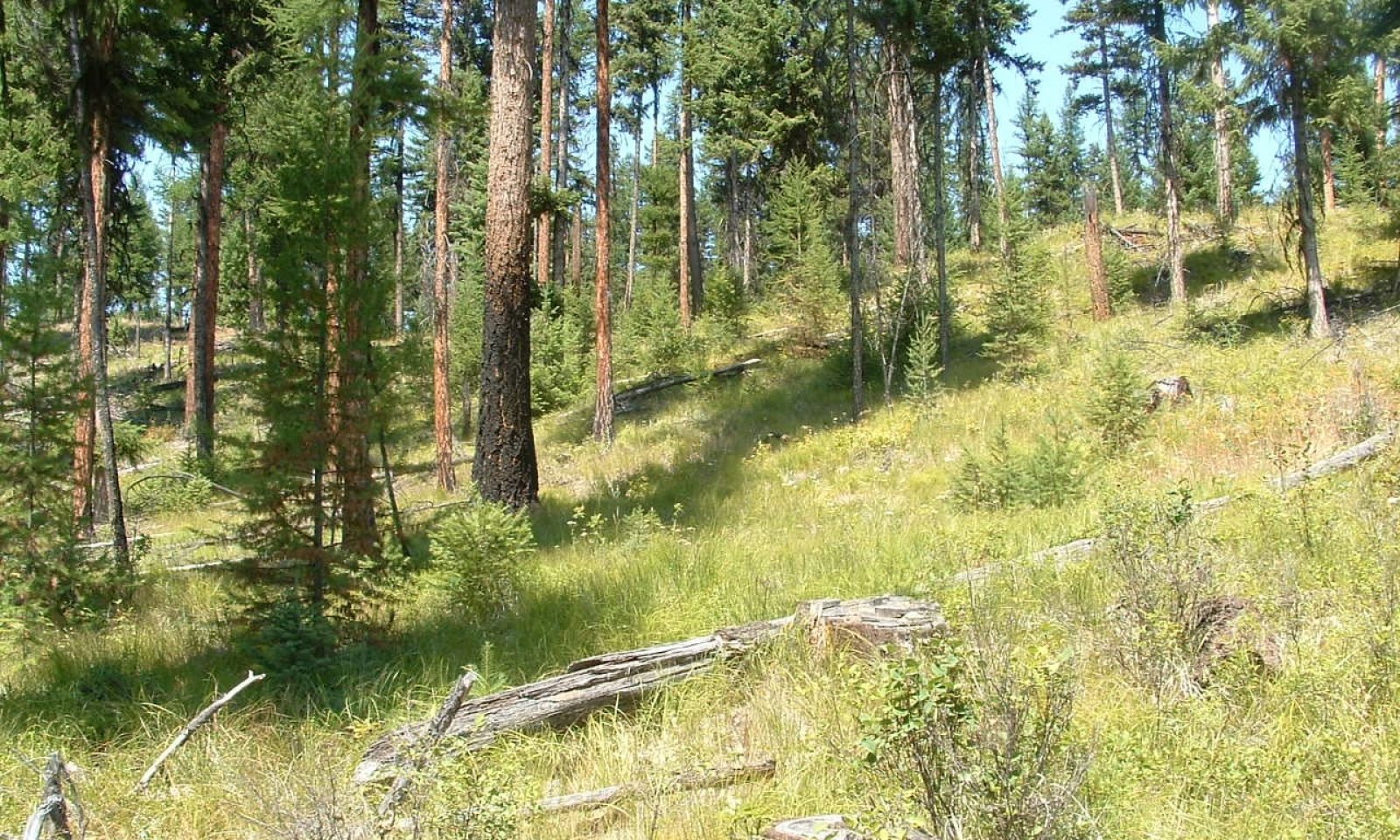
Cool-Frigid, Xeric, Hill and Mountain Slopes (Douglas Fir/Cool Dry Grass) Pseudotsuga menziesii - Calamagrostis rubescens
Scenario model
Current ecosystem state
Select a state
Management practices/drivers
Select a transition or restoration pathway
- Transition T1A More details
- Transition T1B More details
- Transition T1C More details
- Restoration pathway R2A More details
- Restoration pathway R3A More details
- Restoration pathway R4A More details
-
No transition or restoration pathway between the selected states has been described
Target ecosystem state
Select a state
Description
Reference State – Douglas-fir/pinegrass State 1
Reference plant community phase consists of park-like stands of large diameter Douglas-fir, western larch, and ponderosa pine. Understory is dominated by a continual sward of pinegrass. Tree regeneration is scattered. Frequent ground fires every 10-15 years cause mortality in established seedlings/saplings, mainly Douglas-fir creating sites for new seedling establishment, and perpetuate the pinegrass understory. Fire severity is low as to not cause mortality to large diameter overstory. USFS habitat type and plant association publications recognize this site as Douglas-fir/pinegrass. Douglas-fir is the dominant tree species, however, with frequent fire western larch and ponderosa pine will dominate the larger overstory.
Fire exclusion has caused of this site to have high density stocking of the second level overstory from regeneration growing into pole to mature stands. This site condition has high potential for stand replacing fire even killing the larger older overstory.
Submodel
Description
Since European settlement the fire regime has changed greatly reducing frequent low intensity ground fires that kept these forests more open, with reduced tree density and more resilient to severe intensity fires. In addition, years of hygrading (harvesting largest best trees on site), overgrazing, prevalence of many roads which create fire breaks, and tree plantations has created a different forest structure. Dense multi-layered forests of Douglas-fir underneath larger old pine, fir and larch now exist. Dense stands of understory Douglas-fir can have over 1000 stems per acre. This creates extensive ladder fuel conditions which lead to the potential for stand replacing fires
Submodel
Description
Severe stand replacing fire causing duff and organic matter to be destroyed negatively affecting soil fertility. Ceanothus species, especially shiny leaf ceanothus, dominates the site for 50+ years. This shrub species can grow in low nitrogen soils caused by intensive hot fires. Tree regeneration nonexistent to sporadic not capable to reclaiming site
Submodel
Description
A portion this ecological site has been converted to pasture using introduced grasses like orchard grass. Restoration would include intensive site preparation and tree planting followed by prescribed fire in future when trees more resistant to fire damage.
Mechanism
Fire exclusion allowing regeneration to develop underneath old overstory
Mechanism
Time, intensive tree removal of second level DF stand followed by prescribed burning
Mechanism
Careful selection of sites to determine if tree planting success is warranted.
Model keys
Briefcase
Add ecological site groups and Major Land Resource Areas to your briefcase by clicking on the briefcase (![]() ) icon wherever it occurs. Drag and drop items to reorder. Cookies are used to store briefcase items between browsing sessions. Because of this, the number of items that can be added to your briefcase is limited, and briefcase items added on one device and browser cannot be accessed from another device or browser. Users who do not wish to place cookies on their devices should not use the briefcase tool. Briefcase cookies serve no other purpose than described here and are deleted whenever browsing history is cleared.
) icon wherever it occurs. Drag and drop items to reorder. Cookies are used to store briefcase items between browsing sessions. Because of this, the number of items that can be added to your briefcase is limited, and briefcase items added on one device and browser cannot be accessed from another device or browser. Users who do not wish to place cookies on their devices should not use the briefcase tool. Briefcase cookies serve no other purpose than described here and are deleted whenever browsing history is cleared.
Ecological site groups
Major Land Resource Areas
The Ecosystem Dynamics Interpretive Tool is an information system framework developed by the USDA-ARS Jornada Experimental Range, USDA Natural Resources Conservation Service, and New Mexico State University.






